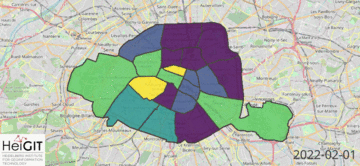At long last, welcome back to a new blog post of the “How to become ohsome“-series. As it’s been quite a while since you got an introduction to how to access the ohsome API, we would like to pick up … Read More
Blog

SocialMedia2Traffic bei Fachaustausch Geoinformation “Smarte Region Rhein-Neckar”
Diesen Donnerstag, 25.11.2021, werden wir unser Kooperationsprojekt SocialMedia2Traffic beim Fachaustausch Geoinformation zum Thema “Smarte Region Rhein-Neckar” vorstellen. Aktuelle Verkehrsinformationen sind eine Voraussetzung für Navigationslösungen, um die beste Route und genaue Reisezeiten zu ermitteln. Diese sind momentan jedoch nicht offen verfügbar. … Read More
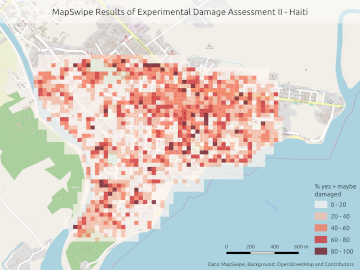
HeiGIT participation at HOT Summit 2021
Also this year HeiGIT is participating at the HOT summit with the topic of “The Evolution of Local Humanitarian Open Mapping Ecosystems: Understanding Community, Collaboration, and Contribution”. Again the conference will be virtual and is organized in three blocks across … Read More

Stellenangebot vom DRK Generalsekretariat Berlin zur Unterstützung der HeiGIT Kooperation
Sie haben Erfahrung in den Bereichen Geoinformatik und Open Data und würden gerne dazu beitragen, dass Menschen in Deutschland und weltweit Hilfe erhalten? Sie würden gerne als Teil des größten humanitären Netzwerks der Welt helfen, dessen zukünftige Ausrichtung in diesen … Read More
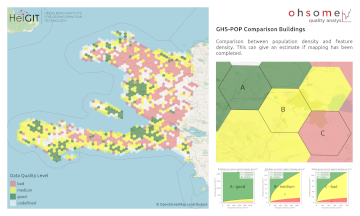
FOSS4G 2021 Videos with HeiGIT contributions online – OSM data quality and MapSwipe
Recently videos with our contributions by HeiGIT to the FOSS4G conference were put online. Did you miss the event? Now you can watch whenever you like 🙂 Benni by HeiGIT explains who to use the ohsome.org framework to develop an … Read More

Global Health Academy 2021: workshop material online
Last week, the Global Health Academy 2021 took place in an online format with a focus on the COVID-19 pandemics. The conference was conveyed by the Heidelberg Institute of Global Health (HIGH) and aimed at practitioners, researchers and PhD students … Read More
ohsome Region of the Month – crop tagging
Hello and welcome back to another blog post of the ohsome Region of the Month series where you can learn about potential use cases of the ohsome API. This month we were be looking at the crop tag and tried … Read More
meinGrün, Tradur und SocialMedia2Traffic bei der mFUND Konferenz 2021
Letzte Woche konnten wir bei der digitalen mFUND Konferenz drei unserer Projekte einem interessierten Publikum vorstellen. Im Fachforum “Die „15-Minuten-Stadt“ datenbasiert ermöglichen” haben wir gezeigt, wie die meinGrün App, das meinGrün Webportal und die angegliederten Dienste Städte dabei unterstützen könnten, … Read More
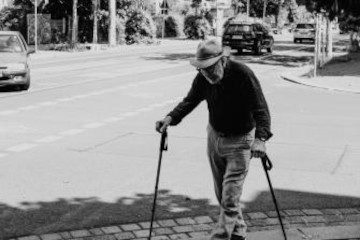
WENN ES IN DER STADT ZU HEISS WIRD
Aktuelle Meldung der Universität Heidelberg zum Projekt HEAL: https://www.uni-heidelberg.de/de/newsroom/wenn-es-in-der-stadt-zu-heiss-wird BADEN-WÜRTTEMBERG STIFTUNG FÖRDERT HEIDELBERGER PROJEKT ZU ROUTINGDIENST MIT HITZEVERMEIDENDEN WEGSTRECKEN Wo in der Stadt Heidelberg ist es besonders heiß und wie wirken sich lokale Hitzebelastungen auf gefährdete Personengruppen aus? Mit dieser … Read More
HOT-MERL Monitoring OSM and Tasking Manager
In 2020, the Humanitarian OpenStreetmap Team (HOT) was selected for The Audacious Project, a collaborative philanthropic initiative that serves as a springboard for social impact on a grand scale. This allows HOT to expand its activities and scale up support … Read More
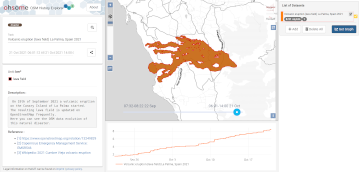
2021 Volcanic Eruption in La Palma (Spain) continues – Explore the temporal changes of the Lava Field in OpenStreetMap on ohsomeHeX
On the 19th of September 2021 a volcanic eruption on the Canary Island of La Palma started. Since then the resulting lava field is constantly growing and continues its destructive expansion. According to an article in the spanish newspaper El … Read More
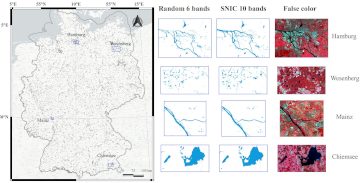
Automatic mapping of national surface water with OpenStreetMap and Sentinel-2 MSI data using deep learning
Large-scale mapping activities can benefit from the vastly increasing availability of earth observation (EO) data, especially when combined with volunteered geographical information (VGI) using machine learning (ML). High-resolution maps of inland surface water bodies are important for water supply and … Read More
Successful end of the 25 Mapathon Project
On October 12th the “25 Mapathon project” was finalized with an exceptionally successful public online mapathon. Around 20 participants with various professional backgrounds mapped 2273 buildings in three hours to support a flood preparedness project of the GRC in Togo. … Read More
Diskussionsrunde zum Thema «Humanitäre Kartographie» bei den Mannheimer einander.Aktionstagen 2021
Im Rahmen der Aktionstage 2021 des Mannheimer Bündnis, bietet Mannheimer Mapathons e.V. eine offene Diskussionsrunde zum Thema «Humanitäre Kartographie» an. Auf dem Podium: Melanie Eckle-Elze, Benjamin Herfort (Disastermappers-HD) und Sandra Sudhoff (CartONG-France). Anschließend wird es für alle Teilnehmer*innen eine Gelegenheit … Read More
Kick-off workshop for the research program “Innovation for adaptation to climate change” by Baden-Württemberg Stiftung
The project HEAL (HeiGIT, GIScience, TdLab Geographie) is funded by the Baden-Württemberg Stiftung as part of the research program “Innovation for adaptation to climate change“. HEAL aims at an extension of the openrouteservice to allow the generation of heat avoiding … Read More
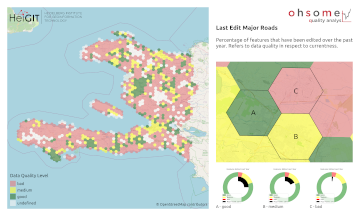
HeiGIT and MapAction at FOSS4G 2021: Using the ohsome quality analyst to support humanitarian mapping
Last week, the annual conference FOSS4G (Free and Open Source Software for Geospatial) has been taken place online. The conference is organized by The Open Source Geospatial Foundation (OSGeo) and attracts over 1000 developers, users, decision-makers and observers from a … Read More
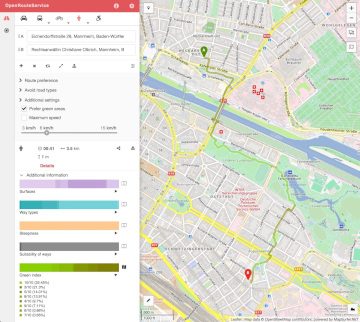
Today paper on green routing at GIScience conference 2021
The “11th International Conference on GIScience” 2021 started! Our full paper related to MeinGrün project and openrouteservice will be presented this Tuesday 13:30 CET in Session 3 “Mobility”: 13:30-13:45: Christina Ludwig, Sven Lautenbach, Eva-Marie Schömann and Alexander Zipf. Comparison of … Read More
Social Sensing Workshop at GIScience Conference 2021
On Monday , Sep. 27 our “Social Sensing Workshop” at the “11th International Conference on GIScience” 2021 will take place. We are also happy to make you aware of full paper related to MeinGrün project and openrouteservice at the main … Read More
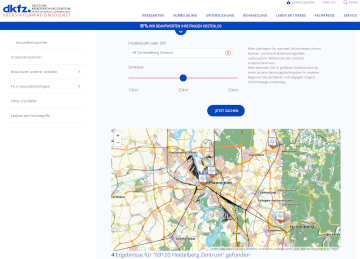
HeiGIT Maps support DKFZ’s Cancer Information Service
One of HeiGIT’s goals is the beneficial use of geoinformation for society. To this end we provide a range of different Web services, mostly based on OpenStreetMap (OSM), such as openrouteservice or the OSM history analytics platform ohsome.org. In particular … Read More

A Web App to generate and disseminate knowledge on urban green space qualities and their accessibility
Urban green spaces (UGSs) can provide important ecosystem services for citizens and their well-being. To make use of these services according to UGS user demands, urban residents, tourists, and city administrations should know where UGSs are located, what qualities they … Read More

